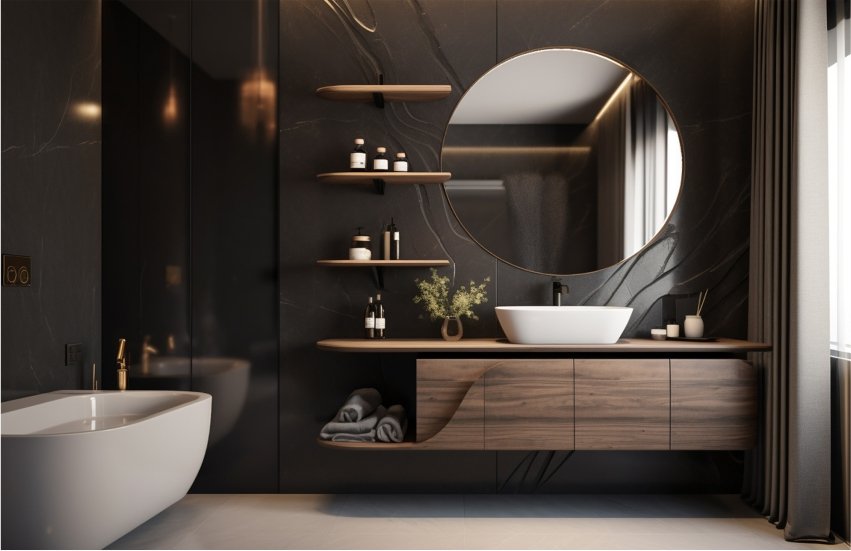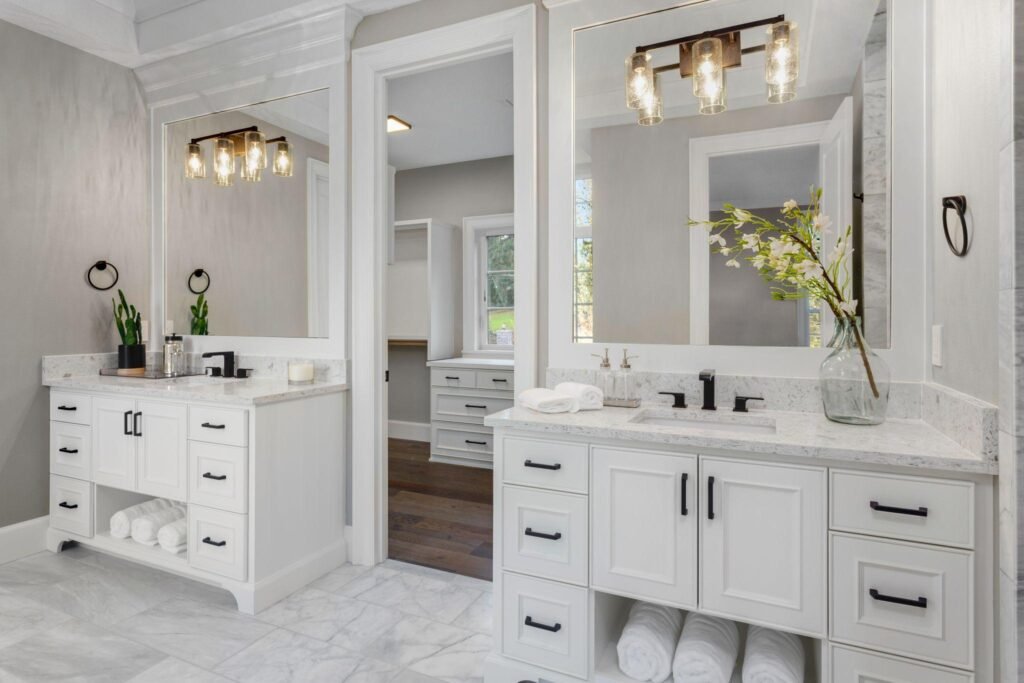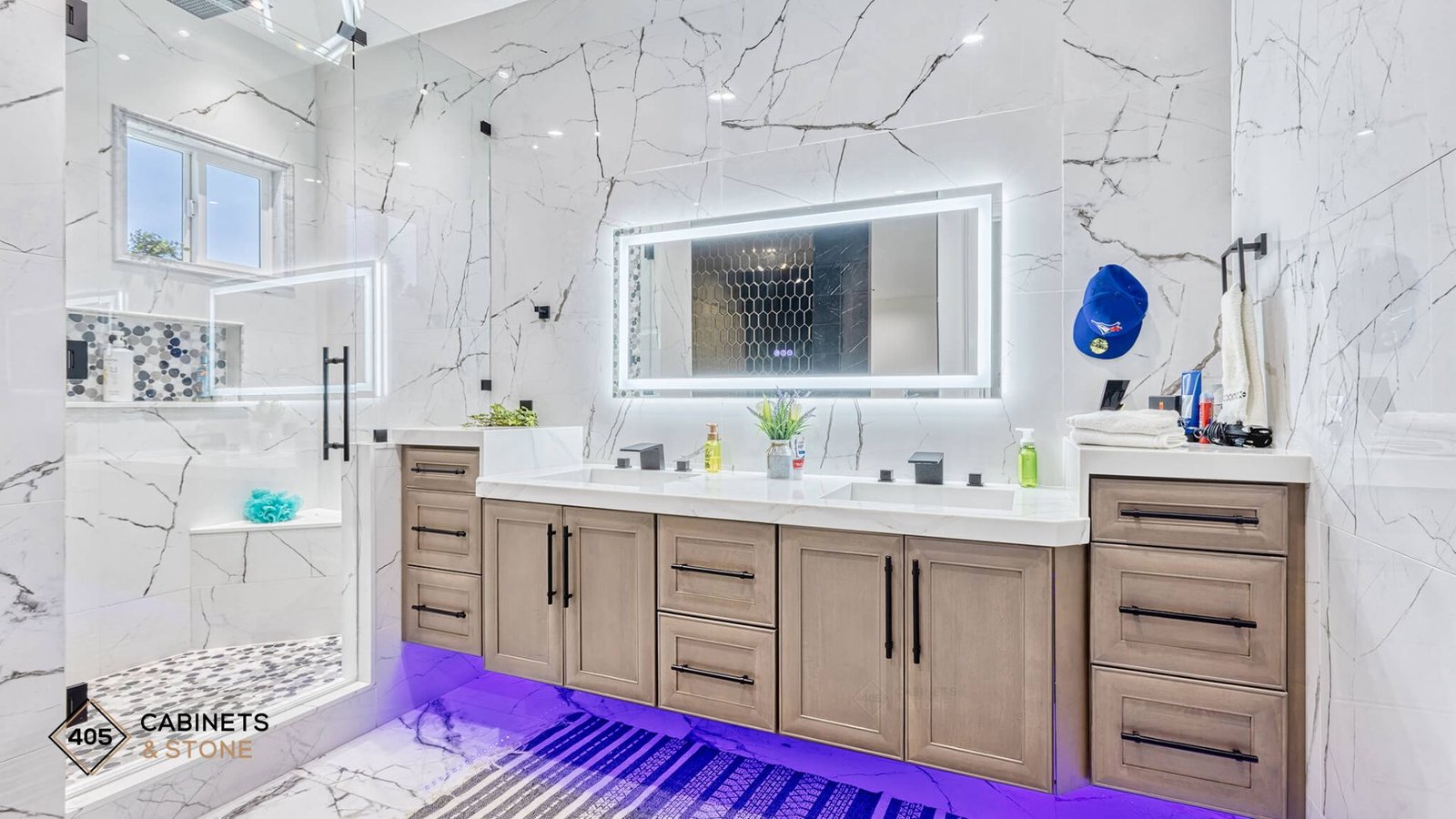Modern bathroom vanity are essential furniture pieces that play a significant role in the overall aesthetic and functionality of contemporary bathrooms. Unlike traditional vanities, which often featured ornate designs and heavy materials, modern bathroom vanities emphasize sleek lines, minimalism, and innovative materials. This evolution reflects a broader trend towards creating spaces that not only serve their practical purpose but also enhance the overall living environment.
The design of modern bathroom vanities incorporates a variety of styles, ranging from minimalist Scandinavian appeal to bold and eclectic designs. These vanities typically feature streamlined shapes, open shelving, and integrated sinks. The use of materials such as plywood, metal, and tempered glass adds to the modern feel, allowing for both durability and style. Functionality is equally important; many modern bathroom vanities come equipped with ample storage solutions, enabling homeowners to maintain a clutter-free space.
In recent years, there has been a noticeable shift in trends within the bathroom design landscape. Natural finishes and textures have gained popularity, moving away from the purely synthetic materials of the past. With the rise of eco-conscious design, many modern vanities are crafted from sustainably sourced wood and feature low-VOC finishes, aligning with the values of environmentally aware homeowners. Moreover, technological innovations have led to the integration of smart features, such as touchless faucets and LED mirrors, further enhancing the user experience.
This section has explored the essential aspects of modern bathroom vanities and their role within contemporary interiors. As design trends continue to evolve, these fixtures will remain central to the organization and style of bathroom spaces, making them vital components of modern home design.

Choosing the Right Size and Style
When selecting a modern bathroom vanity, the size and style of the piece are critical factors that can significantly influence both functionality and aesthetics. To begin, it is essential to measure the available space in your bathroom accurately. Consider the layout and dimensions, as these will help prevent choosing a vanity that overwhelms the room or appears too small and inconsequential. Note the space where the vanity will sit, accounting for essential fixtures such as sinks and plumbing lines, and ensure there is adequate clearance for doors and drawers to open comfortably.
Next, it’s important to understand the different vanity configurations available. Single vanities are ideal for compact spaces, offering ample storage without consuming too much floor area. On the other hand, double vanities are excellent for larger bathrooms, providing extra counter space and sinks, making them suitable for busy households. Beyond size, the style of your modern bathroom vanity can dramatically alter the overall look and feel of the space. A minimalist design can create a serene and uncluttered appearance, whereas contemporary styles may incorporate bold lines and unique materials that make a striking statement. Industrial vanities, characterized by their raw materials and vintage elements, can lend a rustic charm that stands out.
Incorporating the selected vanity within the existing bathroom environment is crucial. To achieve a cohesive look, consider the color scheme, type of fixtures, and overall decor. A modern bathroom vanity should harmonize with other elements, such as lighting and cabinetry, ensuring a unified aesthetic throughout the space. By carefully evaluating size, configuration, and style, you can find the perfect modern bathroom vanity that enhances both the practicality and beauty of your bathroom.
Material Selection and Durability
Choosing the right material for a modern bathroom vanity is paramount, as it significantly influences both durability and aesthetic appeal. The most common materials used in the construction of these vanities include solid wood, medium-density fiberboard (MDF), particleboard, and natural stone. Each material possesses distinct properties that cater to different design preferences and functional needs.
Solid wood, often regarded as a top-tier choice, offers remarkable durability and a timeless appeal. Its natural grain and variation provide a unique character, making each piece distinctive. However, wood’s susceptibility to moisture can be a drawback in a high-humidity environment like a bathroom, necessitating proper sealing and occasional maintenance to prevent warping or mold growth.
MDF represents a more budget-friendly option, combining wood fibers and resin. It is dense, smooth, and less prone to warping compared to solid wood; however, it is generally less resistant to water damage. When selecting an MDF bathroom vanity, look for those that have a water-resistant coating to enhance longevity.
Particleboard, composed of wood particles bonded together, is another economical choice. While it can be cost-effective, its lower durability and susceptibility to moisture can lead to quicker degradation compared to both solid wood and MDF. It may be suitable for low-use bathrooms, but caution is warranted for areas with higher water exposure.
For a luxurious touch, natural stone such as marble or granite can be an excellent addition to a modern bathroom vanity. These materials are exceptionally durable and water-resistant. However, they require regular sealing and maintenance to maintain their appearance. In selecting the material for your modern bathroom vanity, consider factors like durability, water resistance, and the required upkeep to ensure a long-lasting and visually appealing addition to your space.

Storage Solutions and Organization
In today’s fast-paced world, a well-organized bathroom can significantly enhance the overall functionality of the space. Modern bathroom vanities are designed not only for aesthetic appeal but also prioritize effective storage solutions that ensure your essentials are easily accessible yet neatly tucked away. Maximizing space is a key feature of contemporary design, and understanding the various configurations available can lead to a more organized environment.
One of the most common storage solutions found in modern vanities is the incorporation of strategically placed drawers. These are often available in various depths and widths, allowing users to categorize items such as toiletries, towels, and cleaning supplies effectively. A standout feature in many designs is the inclusion of pull-out drawers or trays that provide quick access to items while minimizing the clutter on top of the vanity surface.
In addition to traditional drawers, many modern bathroom vanities offer innovative shelving options, which can provide an open and airy feel to the space. Open shelves can be utilized for decorative items or frequently used products, while closed shelving options help conceal clutter behind cabinet doors. Moreover, hidden compartments within the vanity add an extra layer of organization, allowing users to store smaller items out of sight.
Modern designs also emphasize multifunctional accessories such as pull-out organizers, which can be equipped with dividers to keep items neatly arranged. These organizers can make a significant difference in maintaining a clutter-free bathroom, enabling individuals to quickly locate their personal care items without sifting through a jumble of products.
Practical tips for optimizing the usability of your modern bathroom vanity include decluttering regularly and categorizing items by function. Utilizing baskets or containers within drawers can further enhance organization, ensuring that every essential has a designated space. By embracing these storage solutions, homeowners can transform their bathrooms into orderly retreats that combine style with practicality.

